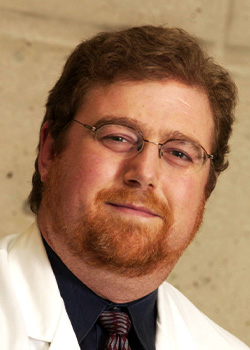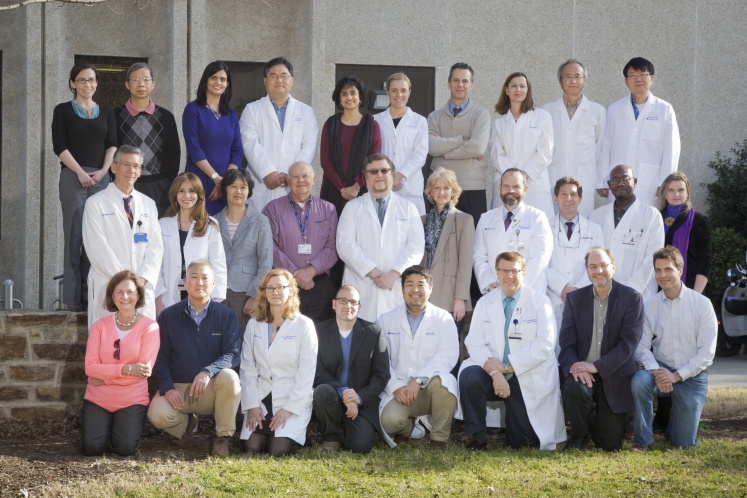
Prepping for a Pandemic: Duke’s Long History of RNA-based Vaccine Development
As researchers around the world race to build a vaccine that can protect people from COVID-19, many of the frontrunners entering the final stretch—including those developed by biotechnology companies Moderna and BioNtech—are RNA-based vaccines.
RNA is the molecule that serves as a blueprint for translating DNA into proteins, and it is found in every living thing, from viruses to humans. Scientists first had the idea to use RNA as an antigen—or a molecule to trigger an immune response—in the mid 1990s. The technique involves injecting a snippet of viral RNA into a person, causing the body to manufacture its own proteins that resemble the virus but aren’t dangerous. This helps the immune system recognize ‘the real thing’ in the future.
RNA vaccines are thought to be a quicker way to obtain immunological resistance than the traditional approach of vaccines that rely on a killed or altered version of the pathogen, because it can take months or even years to grow and study a pathogen in order to determine which molecular parts to extract, inactivate, and use in a vaccine. RNA-based vaccines rely on the human body to do the trick of making the harmless viral protein, and many scientists hope they could be the answer to stamping out the current spread of COVID-19 around the world.
The earliest discoveries that resulted in the development of RNA vaccines actually took place at Duke University, and they happened in a surprising corner for such research— the School of Medicine’s Department of Surgery.
Finding ‘The Cure’

Smita Nair, PhD, professor of surgery, came to Duke in 1993 to study cancer therapeutics as a post-doctoral researcher in the lab of Eli Galboa, PhD, now a professor at the University of Miami. In 1995, Nair and her colleague David Boczkowski made a fortuitous discovery in the lab. For years, they had been experimenting with creating a cell-based vaccine to treat cancer, treating human immune cells with various lab-grown proteins in hit-or-miss fashion to see if they could train the immune system to recognize cancer and kill it. But one day, Boczkowski handed Nair a different-looking tube, one that he had marked “The Cure.”
Amused, Nair tried treating the immune cells with the contents of the new tube, which turned out to be tumor-derived RNA. She and Boczkowski watched excitedly as the dendritic cells in the lab dish—the ‘patrol officers’ of the immune system—located the RNA and took it to the neighboring T and B cells, which began creating antibodies to fight off the intruder. After exposure to the tumor-derived RNA, the immune system recognized the actual tumor cells and began to fight them off as well.
"No one had ever thought to use RNA as an antigen, because they thought it would be chewed up by the cell. But I knew it would work," Boczkowski told Duke Medicine News at the time. As a trained RNA biochemist, he knew that RNA could work to prime the immune system.
The successful experiment was revolutionary for cancer therapy. Nair and Boczkowski published the finding in the Journal of Experimental Medicine in 1996, and the company Argos Technology developed the technology and currently has two products in clinical trials. Nair and Boczkowski, continue to work together and have developed RNA vaccines for a number of cancers, including brain, renal, and prostate.
“So that’s how the RNA vaccine concept was invented,” said Nair. “We performed a lot of the early work and were very active in the RNA vaccine approach, especially to make cell-based cancer vaccines, where we put RNA into patient cells and then administered these cells back into the same patients. And at the same time, other scientists started developing another RNA vaccine approach; administering RNA directly into patients. This approach allows you to develop an off-the-shelf vaccine and does not require patient cells.”
The RNAIssance

It was a natural fit for Nair to start working with another faculty member in the Department of Surgery, Bruce Sullenger, PhD who was an expert in RNA biochemistry. Both Nair and Sullenger had been recruited to Duke in the mid-1990s by David Sabiston, MD, then chair of the Department of Surgery in the Duke University School of Medicine, who was hatching an innovative and ultimately far-reaching plan. He wanted to increase the number of basic scientists working in his clinical department, in order to offer patients the best research-driven care. The trend would later become known as “translational research” and the group would be known as the Division of Surgical Sciences.
Over the past two decades—a period they refer to as the “RNAissance”— Sullenger and Nair have collaborated countless times from their neighboring offices in Medical Sciences Research Building II, continuing to search for medical challenges that could be improved with RNA editing or an RNA vaccine. In 2016, they co-authored an article in the journal science, “From the RNA world to the clinic,” in which they reflected on the rise of RNA editing and vaccine development.
“During the past 25 years, the idea of using RNA molecules as therapeutic agents has grown from a concept into a clinical reality,” they wrote. “Initially, RNA was thought to be a poor choice for a therapeutic agent, given its relatively short half-life in vivo. However, with improvements in stabilization chemistry, and by making informed decisions about where a relatively short-lived molecule may be useful clinically, much of this skepticism has been overcome.”
Nair and Sullenger are currently using their expertise to study what they consider to be one of the biggest stumbling blocks for therapeutics in general: inflammation.
Once the immune system recognizes an intruder through the aid of an antigen—perhaps in the form of a blueprint provided by RNA—it has to respond. Unfortunately, in many cases, it has the tendency to over-react. And then, it doesn’t know how to stop freaking out.
“We are now understanding inflammation can be good or bad,” said Nair. “And when it is bad, it suppresses immune cells, basically making them dysfunctional. So you do want some inflammation to start a response, but to complete the immune response, inflammation has to resolve. That’s what we’re seeing with cancer and with COVID-19. Inflammation is persistent and chronic, and in the end causes the immune system to stop functioning and the person to become very ill or die.”
Sullenger has developed a nanoparticle that can be injected to block inflammation, and Nair studies the ways that the immune system responds to inflammation, or lack thereof.
“He is figuring out a way to block inflammation and I’m studying how chronic inflammation occurs and whether blocking inflammation can allow the immune system work properly,” said Nair.
Not so ‘basic’
The scientists’ success can really be attributed to basic and clinical scientists working together, said Sullenger, an approach that the Department of Surgery has championed over the years, beginning with Sabiston’s early vision.
“David Sabiston was really ahead of his time in tackling this problem of ‘how do you support translational research in a clinical department?’” said Kent Weinhold, head of the Division of Surgical Sciences in the Department of Surgery. Now, said Weinhold, the division is home to 31 translational scientists who specialize in a wide range of research areas, from HIV to cancer to cardiovascular disease.
“We really exist in part to form partnership with clinicians,” said Weinhold. “Of the 31 translational scientists in our division, nearly all, if not all, have ties to doing collaborative research with a surgeon or clinician scientist.”

With Duke’s Department of Surgery being one of only a handful of departments that have a surgical science division across the country, “other institutions want to try replicate what we have here, so we are very eager to share the secrets of our success,” said Weinhold.
Allan D. Kirk, MD, PhD, the David C. Sabiston Jr. Distinguished Professor of Surgery and chair of the surgery department since 2014, said he has made a point to continue Sabiston’s attention to the broad continuum of academic excellence. For the last ten years, the department has consistently ranked in the top 5 across the United States for federal research funding, often earning the number one spot. This distinction is due not only to the departmental research administration office that Kirk has put in place, but also the large number of basic scientists that are found throughout the department.
“An important distinguishing feature of our department, one that was instilled by Dr. Sabiston, is the understanding that surgery is an inherently biological practice and that its successful conduct is dependent on a deep understanding of human biology,” said Kirk. “For this reason, we have always looked to bring on faculty who are exploring fundamental human biology, rather than solely those focused on immediately practical or operational aspects of care. Thus, we have long had faculty representing the most fundamental and most applied areas of investigation.”
Lindsay Key is senior science writer in the Duke University School of Medicine and editor of the online storytelling magazine Magnify.
Top photo of Smita Nair, PhD, provided by Shawn Rocco, photographer and multimedia producer in Duke Health News and Communications.
